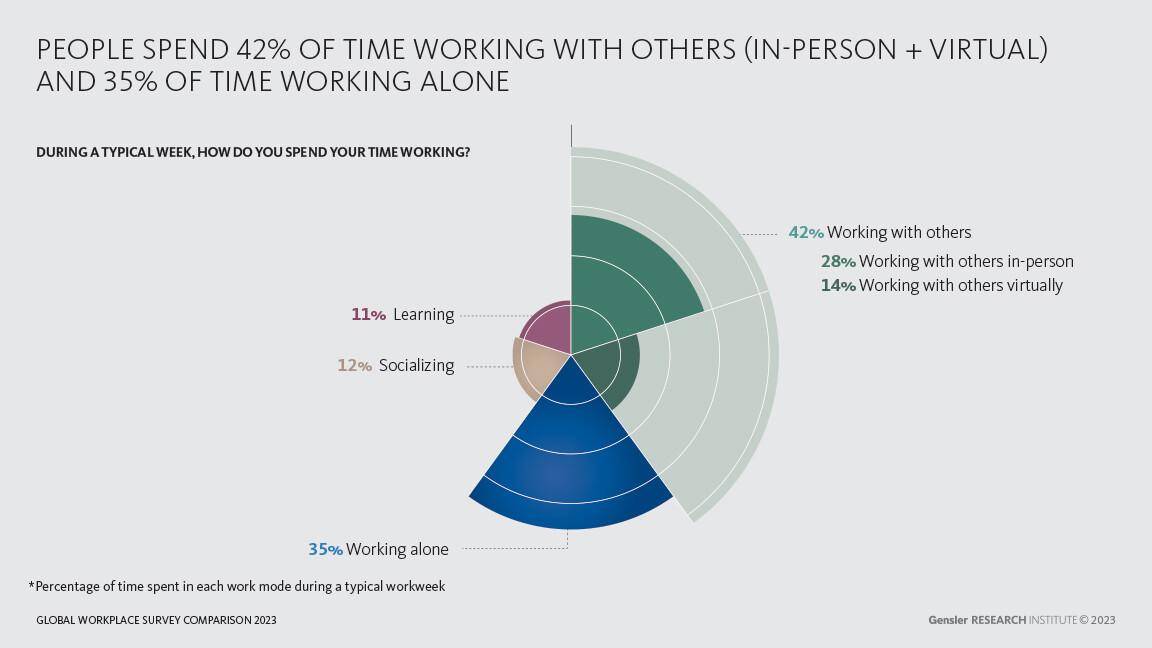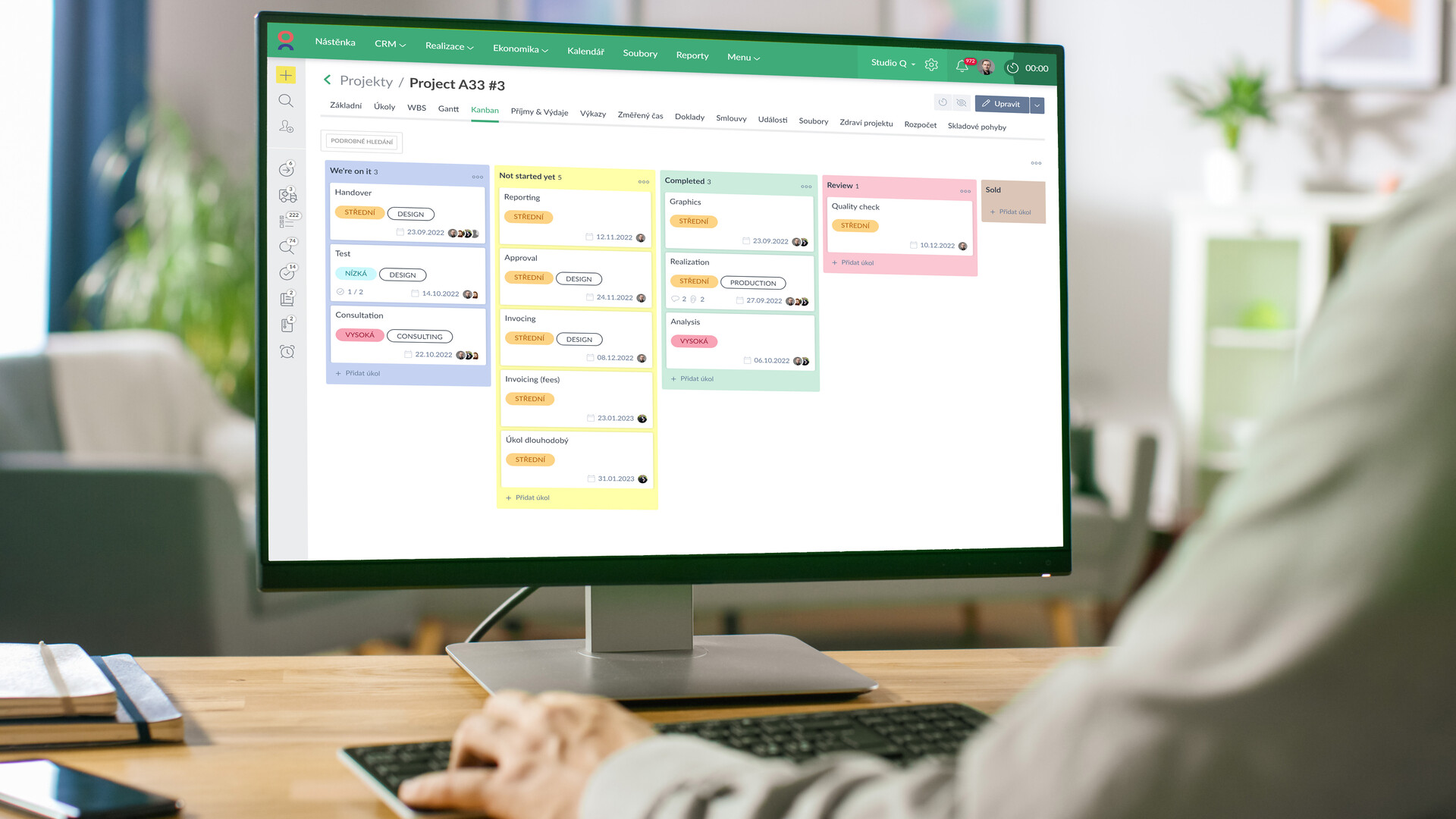Lockdowns during the global pandemic motivated organisations to experiment with innovative, more flexible ways to work. Remote and hybrid work models took charge, and much of the workforce came to appreciate this new way of working. No commute times or daycare costs. Better work-life balance. Lunch at home. Fewer office politics.
Some studies also made a case for remote work directly benefiting employers; not only would companies have happier workforces, but research revealed that they might even be more productive than their in-office counterparts.
But, despite the hopes of many, flexible work models and schedules have started to slip away for thousands of employees. So what does remote work look like now, and is the dislike for back-to-office mutual amongst the entire workforce? Maybe not. Let’s get into the details.
🎓 The Caflou series “How to manage a company and a team remotely” is brought to you by CAFLOU® – business management system which is used to manage the performance and economy of your company, team and projects, 100% digitally, even remotely.

Companies are calling people back to the office
From tech giants like Salesforce and Google to financial services firms like J.P. Morgan, many companies are trying to get their workforce back into the office – and some are mandating it. This is reportedly because leadership teams believe being in-office boosts productivity, and some consider it necessary to encourage collaboration.
For example, David Solomon, CEO of Goldman Sachs, considers in-person interaction to be integral to the “eco-system of the firm.” However, despite the firm's back-to-office strategy that rolled out in March 2022, much of the workforce continues to resist returning to the office for five days a week.
Workers aren’t just pushing back in vain, either – they’re winning the return-to-office fight – with many major enterprises rolling back their office mandates in response as their workforces refuse to comply.
Conflicting research and narrative around productivity
Interestingly, a new study found that remote workers are less productive than their in-office counterparts. But wait – weren’t there studies conducted during the pandemic-era that proved the contrary? Don’t champions of the work-from-home movement cite these bodies of research as compelling reasons to continue with flexible work models?
This is where nuance is important. Yes, a new study suggests some remote workers in a very specific area of work (data entry workers) are more productive in the office than at home. But this may simply be because, according to an old 2012 study, people perform better at boring tasks if they’re in the office. The same study also found that workers were more productive at home when they were assigned creative tasks.
Then again, this study here found that the more hours an employee works from home, the less productive they become.
The takeaway? The productivity benefits of working from home vs. working in office are not straightforward. There are many additional factors at play, so both employers and workers need to approach the subject thoughtfully and try to understand what works best for their specific team and company.
How do workers feel? Exploring generational differences
Is the entire workforce resisting coming back to office? You may or may not be surprised to hear that, no, not everyone wants to exclusively work remotely. In fact, some segments of millennials and Gen Z carry different sentiments toward the back-to-office push. Millennials overwhelmingly want to stay WFH, but a proportion of GenZ is seeking out in-person opportunities.
So what’s causing this divide? Let’s take a look at why millennials are pro-WFH:
- They save on commuting and possibly coffee and lunches.
- They can afford to live in cheaper cities.
- Fewer or no childcare costs.
- Better work-life balance (especially because they don’t lose time commuting every day).
- Many claim that they get more work done at home.
As you’d expect, many or all of these benefits apply to Gen Z, too, so what motivations does the younger generation have for wanting to return to the office? Some experts explained that learning opportunities, the draw of forming workplace connections, and the chance to socialise with coworkers are the primary reasons why GenZ is interested in working on-site. Additionally, the 2023 Global Workplace Survey by Gensler revealed that younger employees are more willing to come to the office if they’re offered a mix of valuable experiences.
So, companies have an opportunity here to encourage the younger workforce to come back to the office – instead of forcing them to – by facilitating them. This means creating collaborative work environments, making commutes more worthwhile (e.g., by providing on-site amenities like gym facilities), and providing opportunities for learning and networking.

Hybrid work: the murky middle ground
The hybrid work model was envisioned to offer the best of two worlds; it was meant to provide employees with the flexibility they desired without compromising on the benefits that physical workplaces offer, such as arguably more effective collaboration and more networking opportunities.
But, in practice, hybrid work hasn’t quite performed as we might have expected it to. In a global study by TinyPulse, an employee engagement platform, 80% of HR executives reported that hybrid work is exhausting employees. A recent study by Fishbowl identified poor communication as the leading cause of the failure of hybrid models – as many as 49.2% of the 7,300 surveyed professionals did not understand their company’s hybrid work plan.
Of course, the failure to understand a company’s hybrid work plan is largely because many organisations lack clearly defined hybrid policies. What’s the process for applying for a remote/hybrid working allowance? Are there travel reimbursement policies? Which days of the week or month should everyone be collectively present in the office for collaboration and team-building activities?
These are just some questions that employers need to clearly answer – and communicate – to their employees. Additionally, we can see the uncertainty employers have toward hybrid and remote work in the events unfolding before us. Companies that mandated return-to-office “full-time, now” have changed their stance, while others that promised full-time remote work (we’re looking at you, Snap) have circled back on their assurances.
Clearly, there is a dire need for employers to design and communicate well-thought-out, comprehensive hybrid work policies for the model to be effective.
How to approach remote and hybrid work in 2023 and beyond
Just because many organisations – including tech giants like Amazon, X, and Snap – have struggled with hybrid and remote work, doesn’t mean you can’t make these models work for you. In fact, if you have a smaller, more agile team, you might have an easier time implementing flexible work models easier than major enterprises.
Here’s what you need to be mindful of.
1. Consider your business’s model and how it operates
Some organisations – and specific business functions – are better suited for remote and hybrid work than others. For example, a digital marketing team may work well remotely, but a fulfilment team has to be physically present for their work. But these examples are quite straightforward – let’s consider a more nuanced situation.
In fact, let’s consider a real business that we’ve spoken to. This is a marketing agency based in the UK that offers employees a hybrid arrangement. The agency doesn’t allow fully remote work because they need team members, such as designers and strategists, to be present for client meetings. So, although the company doesn’t have an internal need for physical presence, they need employees to come in by virtue of the way they do business.
The takeaway here is that businesses operate differently, and the best way to work isn’t always straightforward. Each company needs to carefully consider its needs and outline work-from-home policies accordingly.
2. Find out what your people want
Just as it's important to consider the way your business works, it’s also crucial to account for the way your employees work – and equally important, how they want to. Talk to your teammates and try to better understand their needs – do they want to work fully remote, or hybrid? What are their motivations for wanting to work remotely (e.g., is it to save on commute costs or to move to an area with a lower cost of living)?
In some cases, you might find that offering benefits – like travel reimbursement allowances – will encourage employees to come to the office. In other cases, you might find that they already want to come to the office a few days a week. For example, we spoke to a boutique agency that asked its employees whether they’d like to return to the office after the pandemic, or continue with fully remote work. They chose the former, as the team preferred the social and collaborative benefits of working from the office.
Learning about how your employees want to work allows you to better meet their needs and to reach mutually beneficial compromises where necessary.
3. Outline a stage-wise strategy
After understanding what your team – and business – need, it’s crucial to align your strategy at the leadership level. Business leaders need to outline clear, comprehensive work-from-home policies that include specifics about allowances, procedures, reimbursements, etc. These policies must then be enforced by management and HR.
If you’re implementing a new hybrid or remote work policy, it’s best to roll the program out in stages. This allows you to test the policy and make sure it suits your business (and your people) before committing to it permanently.
4. Implement the right infrastructure
One way to improve your employees’ ability to work remotely is to provide them with the right infrastructure. That doesn’t only mean allowances for equipment – like office chairs and desk equipment – but also a digital infrastructure that supports remote collaboration. For example, you might use Slack for internal comms, a tool like Caflou for tracking projects and holding meetings, etc.
Your flexible working policies need to be complimented by an infrastructure that sets employees up for success. Otherwise, if they aren’t given the right tools, they’ll struggle to perform.

5. Don’t be afraid to experiment
Don’t be discouraged if your hybrid strategy isn’t perfect from the get-go – the world’s biggest companies haven’t even nailed it yet. Just trust your team and keep revising your strategy as you go, until you reach an arrangement that serves both your workforce and business.
While we’ve seen quite a few changes in the remote and hybrid landscape since the pandemic ended – including back-and-forths between employees and employers – it’s clear that we have a long way to go before flexible work models are perfected. And that’s why it’s so important for employees and employers to collaborate and compromise to find an arrangement that’s mutually beneficial.
<< Back to all articles in the series How to manage a company and a team remotely